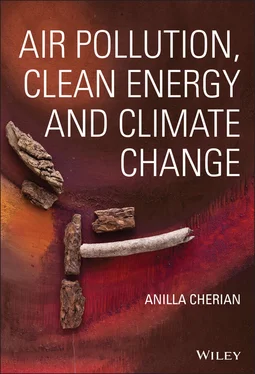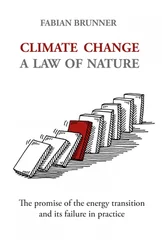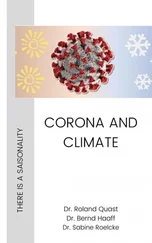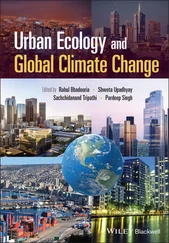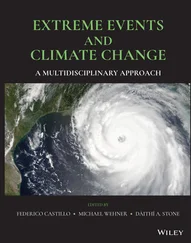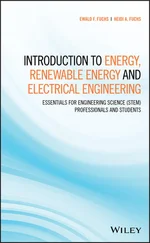Anilla Cherian - Air Pollution, Clean Energy and Climate Change
Здесь есть возможность читать онлайн «Anilla Cherian - Air Pollution, Clean Energy and Climate Change» — ознакомительный отрывок электронной книги совершенно бесплатно, а после прочтения отрывка купить полную версию. В некоторых случаях можно слушать аудио, скачать через торрент в формате fb2 и присутствует краткое содержание. Жанр: unrecognised, на английском языке. Описание произведения, (предисловие) а так же отзывы посетителей доступны на портале библиотеки ЛибКат.
- Название:Air Pollution, Clean Energy and Climate Change
- Автор:
- Жанр:
- Год:неизвестен
- ISBN:нет данных
- Рейтинг книги:5 / 5. Голосов: 1
-
Избранное:Добавить в избранное
- Отзывы:
-
Ваша оценка:
- 100
- 1
- 2
- 3
- 4
- 5
Air Pollution, Clean Energy and Climate Change: краткое содержание, описание и аннотация
Предлагаем к чтению аннотацию, описание, краткое содержание или предисловие (зависит от того, что написал сам автор книги «Air Pollution, Clean Energy and Climate Change»). Если вы не нашли необходимую информацию о книге — напишите в комментариях, мы постараемся отыскать её.
to leave no one behind
Air Pollution, Clean Energy and Climate Change
Energy and Global Climate Change
Air Pollution, Clean Energy and Climate Change — читать онлайн ознакомительный отрывок
Ниже представлен текст книги, разбитый по страницам. Система сохранения места последней прочитанной страницы, позволяет с удобством читать онлайн бесплатно книгу «Air Pollution, Clean Energy and Climate Change», без необходимости каждый раз заново искать на чём Вы остановились. Поставьте закладку, и сможете в любой момент перейти на страницу, на которой закончили чтение.
Интервал:
Закладка:
The historical role of NNSAs – fossil fuel and cement producers – in terms of anthropogenic GHG emissions has been far more significant than previously discussed. As highlighted in ‘Tracing anthropogenic carbon dioxide and methane emissions to fossil fuel and cement producers, 1854–2010’ (Heede 2014). Heede’s analysis focused on commercial and state‐owned entities responsible for producing fossil fuels and cement as the primary sources of GHGs that have driven and continue to drive climate change, and found that ‘ nearly two‐thirds of historic carbon dioxide and methane emissions can be attributed to 90 entities ’ (emphasis added, 2014, p. 241). The powerful role of fossil fuel‐driven industry groups and countries in stymieing action at the national and global level is hardly surprising, but still worth highlighting in terms of the tenacious duration and hold of such lobbying efforts.
Baumgartner et al.(2009) demonstrated the impact of lobbying on policy changes – essentially in determining who wins and loses. Efforts to mitigate climate change unleashed enormous lobbying interests both within countries like the US and at the global level from the very start of global negotiations on climate. Over two decades ago, Ross Gelbspan highlighted what he termed ‘a most impressive campaign’, which he characterized as an ‘assault on our sense of reality’ within the US Congress which allowed for a successful war waged on science and which has been a ‘potent weapon on the international stage, permitting the corporate coal and oil interests ‐ in tandem with the Organization of Petroleum Exporting Countries (OPEC) and other coal and oil exporting nations ‐ to frustrate diplomatic attempt to address the crisis meaningfully’ (Gelbspan 1997, p. 9). More recently, Brulle (2018) estimated that the lobbying expenditures related to climate change legislation in the US Congress from 2000 to 2016 was over $2 billion, constituting 3.9% of total lobbying expenditures. Led by fossil fuel and transportation corporations, utilities and affiliated trade associations, these lobbying efforts were found to dwarf those of environmental organizations and renewable energy corporations.
It is time to question whether the UN‐led global SDA can respond effectively to the needs of socio‐economically marginalized households, communities and countries lacking access to clean energy and clean air whilst suffering from adverse climatic impacts? What exactly does an examination of global or regional partnerships or protocols on climate, energy and air pollution reveal in terms of integrated and responsive action that can transform lives for millions across the globe? The COVID pandemic has exposed the tragic costs borne by those who are consigned to live at the nexus of public health neglect and existing chronic respiratory illnesses worsened by exposure to PM pollution that emanates from fossil fuel combustion and industrial pollution. According to a 2020 study conducted by researchers at Harvard University’s T.H. Chan School of Public Health, ‘Air pollution and COVID‐19 mortality in the United States: Strengths and limitations of an ecological regression analysis’, individuals with long‐term exposure to air pollution are more likely to die of COVID‐19. This first of its kind study examined the link between long‐term exposure to PM 2.5– generated largely from fuel combustion from cars, refineries and power plants – and the risk of death from COVID‐19 in the US. It looked at 3000 counties across the US compared levels of fine particulate air pollution with coronavirus death counts for each area. After adjusting for population size, hospital beds, number of people tested for COVID‐19, weather and socio‐economic and behavioural variables such as obesity and smoking, the researchers found that a small increase in long‐term exposure to PM 2.5leads to a large increase in the COVID‐19 death rate. More specifically, the study found that someone who lives for decades in a US county with high levels of fine particulate pollution is 8% more likely to die from COVID‐19 than someone who lives in a region that has just one unit (1 μg/m 3) less of such pollution (Wu et al. 2020). This happens to be a terrifying finding for millions who have lived with chronic exposure to PM 2.5in the most polluted cities in the world. Additionally, what is troubling about COVID‐19 morbidity burdens on poorer, black and brown lives is what Gibbons outlined, which is that detailed studies of ‘past epidemics show the same tragic pattern repeating again and again’, infectious diseases more easily take hold in groups with pre‐existing illnesses, who live and work in crowded conditions and who also lack access to adequate health care.
Another 2020 study by Cambridge University researchers entitled ‘Links Between Air Pollution and COVID‐19 in England’ also found a link between the severity of COVID‐19 infection and long‐term exposure to air pollutants, including nitrogen oxides and ground‐level ozone from car exhaust fumes or burning of fossil fuels. Researchers explored the links between major fossil fuel related air pollutants and SARS‐CoV‐2 mortality in England. The study compared real‐time SARS‐CoV‐2 cases and morbidity from public databases to air pollution data monitored across over 120 sites in different regions in the UK. It found that PM 2.5was a major contributor to COVID‐19 cases in England, and an increase of 1 m 3in the long‐term average of PM 2.5was associated with a 12% increase in COVID‐19 cases in England. The study concluded that ‘a small increase in air pollution leads to a large increase in the COVID‐19 infectivity and mortality rate in England’; and that the study itself could be used as ‘a framework to guide both health and emissions policies in countries affected by this pandemic’ (Travaglio et al. 2021, abstract). Meanwhile, ‘Air Pollution and Risk of Death due to COVID‐19 in Italy’ also confirmed the ‘existence of a link between pollution and the risk of death due to the disease’, and more specifically reiterated ‘the need to act in favour of policies aimed at reducing pollutants in the atmosphere, by means of speeding up the already existing plans and policies, targeting all sources of atmospheric pollution: industries, home heating and traffic’ (Dettori et al. 2021, abstract). The conclusions and recommendations of all three studies are of particular relevance for cities like Delhi, India, which ranks amongst the most air polluted in the world. According to a 20 October 2020 BBC report, PM 2.5levels in Delhi averaged around 180–300 μg/m 3– 12 times higher than the WHO’s safe limits – a depressing reversal as Delhi residents were able to breathe relatively clean air because a stringent lockdown brought industries and traffic to a grinding halt (Pandey 2020). However, a 26 March 2021 Reuters article referenced the fact that Delhi had been ranked as the most polluted city in the world for the third year in a row by researchers at IQAir, an organization that measures air quality levels of PM 2.5across the world’s capital cities (Arora 2021). The harsh reality is that there is a paucity of data on the full extent of PM air pollution on human morbidity in cities in the developing world, let alone those that examine the impacts on long‐term exposure to PM air pollution on COVID‐19 given the current burden of disease and death experienced in countries like India, Brazil and South Africa where COVID variants are decimating lives.
There is now an increased urgency in focusing on the linkage between PM pollution related to the curbing of SLCPs within the context of sustainable cities in countries like India because cities are the loci where two inherently linked crises combine – climate vulnerabilities and toxic levels of energy related air pollution. The magnitude of the public health crisis that air pollution poses is impossible to escape in many cities. Cities are undeniably on the frontline for linked action on clean energy, air pollution reduction and climate resiliency solutions. Winning the interconnected battle necessitates integrated action that is directed via innovative and responsive city‐driven measures that do not need to depend on stalemated intergovernmental climate outcomes. The role of cities and the linkages between air pollution, clean energy and climate responsive action are discussed in greater detail in the chapters that follow. From the outset, it is important to underscore that climate and clean energy action falls clearly within the purview of individual nation‐states, but the urgency of the intertwined climate, clean energy and clean air access crises is such that there is a need to broaden the arena of participants and critically examine the track record of UN outcomes related to air pollution, climate change and clean energy access. Have intergovernmental consensus‐driven declarations of willingness to address climate change focused on specific energy related air pollution targets and goals that are directly responsive to those cities and communities where PM air pollution urgently needs to be abated? Put simply, it is necessary to confront the protracted pace of intergovernmental negotiations and look towards new forms of partnerships and modalities that can more effectively integrate access to clean air and access to clean energy for the poor via the reduction of SLCPs.
Читать дальшеИнтервал:
Закладка:
Похожие книги на «Air Pollution, Clean Energy and Climate Change»
Представляем Вашему вниманию похожие книги на «Air Pollution, Clean Energy and Climate Change» списком для выбора. Мы отобрали схожую по названию и смыслу литературу в надежде предоставить читателям больше вариантов отыскать новые, интересные, ещё непрочитанные произведения.
Обсуждение, отзывы о книге «Air Pollution, Clean Energy and Climate Change» и просто собственные мнения читателей. Оставьте ваши комментарии, напишите, что Вы думаете о произведении, его смысле или главных героях. Укажите что конкретно понравилось, а что нет, и почему Вы так считаете.
